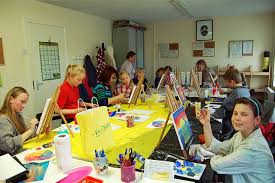In Part I of this two-part mini series we look at changes in the teenage brain and how these can affect behaviour
The teenage brain – a work in progress:
Adolescence has had a very bad press. Horror stories of unpredictable mood swings, secrecy, dodgy friends, general rebellion in the ranks, and experimenting with the dangers of sex, drugs, and what passes these days for rock and roll, all seem to paint a picture of things going badly wrong. And yet the challenges of the teenage years are as normal a stage of child development as the sleepless nights, endless bodily fluids, food-spattered walls and temper tantrums of the first two years.
In fact, these two phases of development share something very similar – the human brain is going through some of the most radical changes it will ever experience in such a brief period of time.
So, what’s going on in there and how can parents support their teenager as their brain appears to be
wreaking havoc all around them?
Childhood and the brain-building project:
At birth, the human brain arrives a bit like a kit where about half of the pieces have already been put together, but the rest still need to be assembled. The process of building the brain out of these remaining pieces is one of trial and error as brain cells try and work out which connections are the strongest and most effective, and which ones aren’t. These connections happen at the rate of about two million per second in the first two years of life, and by the end of this phase the brain has a hundred trillion connections across all of its cells – roughly twice the number needed in adult life.
Despite all this potential, the unsuspecting two-year-old doesn’t have enough life experiences for the brain to know what to do with all of these connections – and that’s what childhood is pretty much all about. Taking all of this potential, shaping it and pruning it until we have the fully formed adult brain at the age of 25. Yes, you read that correctly – it takes 25 years for the human brain to mature from the half-completed kit at birth to the fully functioning article needed to grapple with the complexities of adult life.
By the time the brain arrives at puberty, there’s been a steady period of roughly 10 years gradually cutting back connections and shaping the brain in preparation for the next explosive phase of development. Having ideally settled into the safe rhythms of family and home life, friendships and school, the brain now needs to prepare the maturing child to leave all of this behind and launch themselves out into a world which looks in equal measure exciting and full of possibilities, and terrifying and full of danger.
To help this to happen, the brain develops according to a pre-set pattern that, in the short term, produces behaviours from the young person that can be challenging, confusing and sometimes downright frightening for parents. These emotions can be helpful in offering an insight into how teenagers might be feeling as their bodies, brains and personalities suddenly change almost beyond recognition.
The areas of the brain that are responsible for self-identity, problem-solving, managing emotions
and impulses, understanding others, appreciating consequences and managing risk are at this point
undeveloped. Up to now, children have relied on adults around them to help them to negotiate
these. From here, they’ll need to begin to learn how to manage independently in preparation for
adult life. To kick-start this learning, the brain suddenly goes through a dramatic process of growing
millions of new cells, connecting them up in the same trial and error fashion as early childhood, and
then pruning them back into the shape that’s needed.
For the newly-arriving teenager, the last time this happened was in the first two years of their life,
and they probably don’t remember any of it. All they know is that a nicely ordered world appears to
be have been turned inside out, and they can’t understand why. Is it any wonder, then, that there
suddenly appears to be an alien living in the house?
Parenting and the social brain
There are two final pieces of the biological puzzle that can help parents to work out the best way to
support their teenager through this vital stage of their development. The first is that, although the
basic structures of the brain are complete by the age of 25, it continues to fine-tune and adapt until
we die.
As we go through life’s challenges and experiences, the brain is constantly checking in with
itself and making changes as we learn from these. Fundamentally, this means you absolutely can
teach an old dog new tricks, and these new tricks are usually learned when things get difficult. As a
parent, you really need to know this since it will provide you with one of the essential keys to dealing
with things successfully.
The second piece of the puzzle is that recent research has begun to identify that the brain is a social organ. Unlike all of the other essential organs of the body, it needs input from the outside world in general, and other people in particular, so it can develop the connections and structures to do its job and help us to function socially. Our brains grow, develop and learn in a rich mixture of social relationships over a lifetime of experiences. In other words, brains need other brains. What this all seems to boil down to is that parenting is a complex process of two-way learning.
Just as teenagers are busy building the basic Parenting the teenage brain: How to manage conflict
Part two: Stay calm, develop your relationship with them and take time to re-charge.
In part one we saw how changes in the teenage brain are directing young people through a period of
separation and independence from their parents that can involve a lot of emotional turmoil. In part
two we’ll look at some principles that can help parents to maintain their relationship with their developing child, manage conflict, stay involved and play an active part in supporting them through this challenging time.
There’s no magic wand, it can be hard work, and it’s very much trial and error, but these principles
can help you to guide things in the right direction.
1) Relationship and connection are everything
Developing and maintaining a close connection with your teenager can be challenging when the messages generally seem to be, “go away and leave me alone” and “I’m off out with my friends”. However, what this really means is that the ground rules for your relationship are changing, because your teen is changing. Teenagers no longer want to do the same things or relate in the same ways as they did when they were younger. What complicates things just a bit is that, although their brain is wiring itself up to encourage them to relate differently and move away from home, this is a fragile and vulnerable time when they will need you more than ever. For parents, this can feel confusing
and seem a bit like having to get to know their child again from scratch.
What this means in practice is that you may need to be more flexible, creative and opportunistic about building your connection. For example, following their lead and picking the right time – maybe meal times, chatting about a film you’ve just watched, or on one of those endless taxi runs. Perhaps having a shared project like cooking a meal. Don’t understand computer games/dubstep/football/the latest fashion? Forget your opinions, show an interest. Be curious
about their world and what matters to them. Be prepared to stop what you’re doing and seize the moment – teenagers are constantly sending out little signals – often in a mixed code of mumbling and hanging around, but they’re there to be deciphered. Finally, oil the wheels of goodwill by dropping in little compliments for a job well done, or an effort well made, or just tell them that you love them. You may get an odd look, but, believe me, they’ll appreciate it.
2) Teach them how to be calm by staying calm
Ever given someone a piece of your mind? Ever ended up wishing you hadn’t? Well, your capacity for holding your breath, gritting your teeth, counting to ten and even going off and having a chat with yourself to help you calm down will be a major asset. In teenagers, the areas of the brain that produce emotions have been up and running for years. However, the adolescent brain doesn’t yet know how to steer its owner through conflict and emotional turmoil, so teenagers need someone to be in charge of the emotional temperature and turn down the thermostat before things escalate out of control. By managing your emotions, you are helping your teenager learn how to manage theirs.
For many parents this can be one of the most difficult principles to practice as things can often spiral very quickly.
Learning to take a step back if you find yourself criticising or being angry with your teen is time well spent and will go a long way to helping you maintain your connection with them.
3) Think things through and always have a plan
Once you’ve calmed yourself down, you’re going to need to work out a plan for how to approach the situation, and this is where the adult brain can have the upper hand. In teenagers, the areas of the brain that govern empathising and looking at things from different perspectives, prioritising, working out plans of action and generally chewing things over with people are still a work in progress. So someone needs to be able to do all the thinking while your teen learns the ropes. And guess who’s going to be showing them these ropes? Trying to understand what’s going on for them and for you, thinking about what outcome you want and then working out a plan for talking things through with them will all create an environment for them to learn these complex skills for themselves.
4) Change ‘Rules’ into ‘Agreements’
Teenagers are internationally renowned for seeing a rule and challenging it with the dogged persistence of a seasoned lawyer. This is because their brains are pushing them to seek greater independence and they are needing to develop the thinking skills to be able to talk about and invest in the rules of life. Re-drawing the map from rules that are imposed by you, to agreements that are negotiated together give you the chance to find out what matters most to them and vice versa. And because you have been practicing Principle 1 developing your connection, and Principle 2 staying calm, it gives your teen the safe space that they need to practice getting their point across and also
listening to yours. And once you have those agreements, stick to them!
5) Look after yourself, give your brain time to re-charge
Being a parent can be rewarding, inspiring and fun. It can also be tiring, frustrating and demoralising.
Sometimes all in the space of an hour. This takes a lot of energy, and your brain is doing a lot of the
donkey work. It will be compensating for the areas of growth and development that your teenager’s
brain is going through as you support and encourage them. This can sometimes stretch you to your
limits. It’s very important that you have time to re-charge, friends that you can talk to, and activities
that you enjoy to help you to provide the support that your teenager needs. And remember that you
don’t have to do this on your own. There are many useful Parenting Courses such as Parents Plus
Adolescents where you can meet other parents, share the load and get some ideas. Finally, here’s a
question to get you thinking. In 30 years’ time or so, when your teenager has children of their own
and you’re both looking back, what do you want to remember about these teenage years, and what
can you do now to help this to happen? Happy parenting.
– Fred Ehresmann is senior UK trainer for Parents Plus Charity and senior lecturer in mental
health at the University of the West of England. For more information see
barefootparent.com




